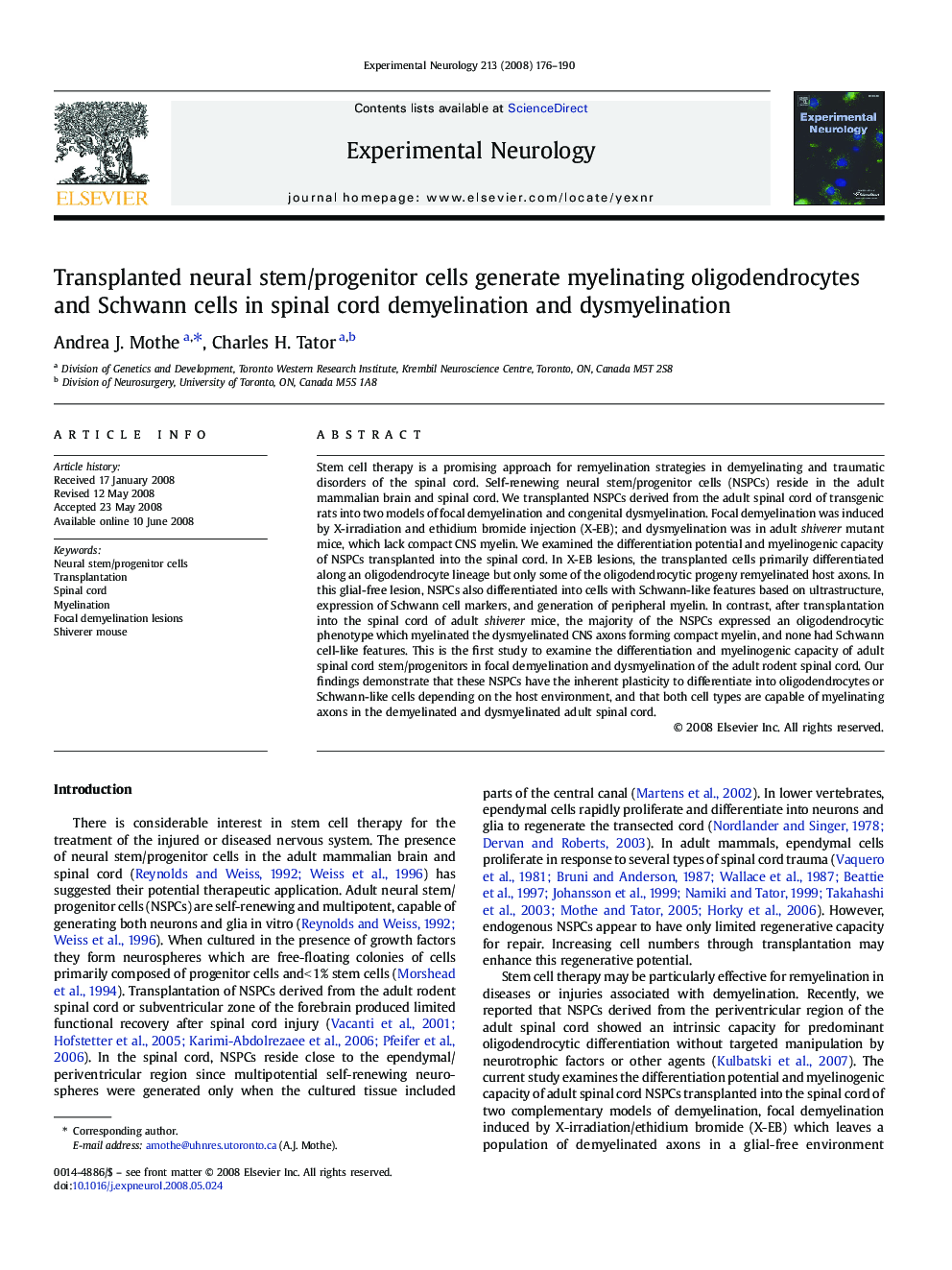| Article ID | Journal | Published Year | Pages | File Type |
|---|---|---|---|---|
| 3056429 | Experimental Neurology | 2008 | 15 Pages |
Stem cell therapy is a promising approach for remyelination strategies in demyelinating and traumatic disorders of the spinal cord. Self-renewing neural stem/progenitor cells (NSPCs) reside in the adult mammalian brain and spinal cord. We transplanted NSPCs derived from the adult spinal cord of transgenic rats into two models of focal demyelination and congenital dysmyelination. Focal demyelination was induced by X-irradiation and ethidium bromide injection (X-EB); and dysmyelination was in adult shiverer mutant mice, which lack compact CNS myelin. We examined the differentiation potential and myelinogenic capacity of NSPCs transplanted into the spinal cord. In X-EB lesions, the transplanted cells primarily differentiated along an oligodendrocyte lineage but only some of the oligodendrocytic progeny remyelinated host axons. In this glial-free lesion, NSPCs also differentiated into cells with Schwann-like features based on ultrastructure, expression of Schwann cell markers, and generation of peripheral myelin. In contrast, after transplantation into the spinal cord of adult shiverer mice, the majority of the NSPCs expressed an oligodendrocytic phenotype which myelinated the dysmyelinated CNS axons forming compact myelin, and none had Schwann cell-like features. This is the first study to examine the differentiation and myelinogenic capacity of adult spinal cord stem/progenitors in focal demyelination and dysmyelination of the adult rodent spinal cord. Our findings demonstrate that these NSPCs have the inherent plasticity to differentiate into oligodendrocytes or Schwann-like cells depending on the host environment, and that both cell types are capable of myelinating axons in the demyelinated and dysmyelinated adult spinal cord.
